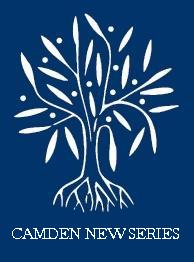No CrossRef data available.
Article contents
Extract
The Chapels attached to the Palaces of Sovereigns form a remarkable feature of Christian Europe, and, from the earliest time on record, they seem to have been served on the same grand scale as the Cathedrals.
In England the Chapel Royal is the most ancient choir concerning which we have any authentic account. In olden times it was the fullest, best appointed, and the most remarkable for its excellence in the performance of the choral service.
As regards the constitution of this establishment, Dr. Jebb, in his valuable work orr “The Choral Service of the United Church of England and Ireland ” (1843, 8vo. p. 147), gives us the following
The earliest facts on record relating to the “King's Chapel ” are contained in the Liber Niger Domus Regis, a MS. of the time of Edward IV. in which an account is given of this establishment in the reign of that monarch.
- Type
- Introduction
- Information
- Camden New Series , Volume 3: The Old Cheque-Book, or Book of Remembrance, of the Chapel Royal, from 1561 to 1744. , September 1872 , pp. i - xix
- Copyright
- Copyright © Royal Historical Society 1872
References
page ii note * The old Chapel Eoyal, Whitehall, was consumed by fire Jan. 5, 1698; and the new Chapel opened Dec. 9, in the same year. Dr. Blow composed an anthem, “Lord remember David,” for the occasion. The Chapel Eoyal St. James's was occasionally used in the sixteenth and seventeenth centuries, but the service was not regularly instituted there until the beginning of the eighteenth century. The celebrated Henry Purcell (according to Wheatley's Piccadilly, p. 294,) once lived in “a suite of apartments in St. James's Palace, access to which was obtained by a winding staircase in the clock-tower.” Dryden when in debt used to stay with him for weeks together in these apartments, where he was secure from his creditors.
page ii note † Harl. MSS. 293 and 642. See also Ordinances for the Government of the Eoyal Household, &c. 1790, 4to.
page ii note ‡ Firewood cleft and cut into billets of a certain length; each talsheid (or talwood) being sixteen inches in compass.—COWELL.
page iii note * Epistellers, i.e. readers of the Epistles; they are frequently mentioned in the pages of the Cheque-Book. Gospellers, also of frequent occurrence, were the readers of the Gospels.
page iv note * Rot. Parl. v. 594; vi. 86.
page iv note † “An Epitaph written by Sir Thomas More upon the death of Henrie Abyngdon, one of the Gentlemen of the Chappell. Wich devise the author was fayne to put in meeter, by reason the partie that requested his travel did not like of a very proper epitaph, that was first framed, because it ran not in rythme, as may appeare at ful in his Latin epigramins. Whereupon Syr Thomas More shapt these verses ensuing, with which the suppliant was exceedingly satisfyed, as if the author had hit the nayle on head:—
page vi note * See “Some Account of an unpublished Collection of Songs and Ballads by King Henry VIII. and his Contemporaries, communicated to the Society of Antiquaries by W. Chappell, Esq. F.S.A.” Archœologia, vol. xli. p. 380.
page vii note * Lysons, Environs of London, iv. 467, speaking of the old church at Greenwich, says it contained memorials “of Clement Adams, Master of the Children of the Chapel, 1516, and his wife, who is said to have survived him 72 years, dying in 1588.” He quotes Strype's Circuit Walk, annexed to Stowe's Survey, p. 91, as his authority. Lysons is altogether wrong in stating that Adams was Master of the Children of the Chapel. The fact is that he was appointed, May 1552, “Schoolmaster to the King's henchmen at Greenwich,” with a salary of 10l. per annum, but was in no way connected with the Chapel establishment. The true date of his death is Jan. 9, 1586–7. See Cooper's Athense Cantabrigienses, ii. 6. I take this opportnuity of mentioning that John Hunnis, spoken of in Malone's Shakspeare (edit. 1821, iii. 423) as Master of the Children of the Chapel in 1572–3, is a mistake for William Hunnis, who was Master at the time. The extract from the Council Registers must have been wrongly transcribed by Malone.
page vii note † Probably earlier. Henry VI. authorized the pressing of minstrels (a word of large signification), and his precept, dated 1456, may be seen in Rymer's Fœdera, xl. 375.
page viii note * Harl. MS. 433. See also Collier's Annals of the Stage, i. 34.
page ix note * Collier's Annals of the Stage, ii. 16.
page ix note † Ibid. i. 69.
page x note * Printed by Hawkins and Burney, but without any reference to the particular MS. from which it has been taken. It is probably from one of the Cottonian MSS. although I have not succeeded in tracing it.
page xii note * An officer established in conformity with a similar one in other departments of the Royal Household.
page xiii note * The office of “Clerk of the Cheque ” is now virtually abolished. The duties are performed by the Sub-dean.
page xiii note † “The precise year of his death is nowhere recorded.” Collier's Bibliographical Account of Early English Literature, i. 242. It is to this valuable work that I have been indebted for the poetical extracts given in my note about Edwards at the end of the volume.
page xvi note * See Warton's Life of Sir Thomas Pope (Appendix, p.425), and the Rev, M. E. C. Walcott's article on “Choral Matters, ” in the Musical Times, April 1, 1871, for notices of Organists in early times.


